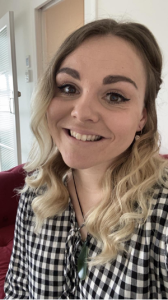

October 12, 2022
By Greta Bull-Crossan
Within children’s everyday experiences, listening, dancing, and singing to waiata, children grow familiar with musical elements such as the beat and rhythm. Beat-making is of great benefit to children’s development from infancy to preschool ages and is a wonderfully fun and collaborative form of musical play in the Early Childhood Education setting. Te Whāriki, the Early Childhood Education curriculum of Aotearoa New Zealand, outlines kotahitanga, holistic development, as one of four key learning areas of focus in ECE settings. This article outlines how beat-making can support holistic learning and provides several teacher-led experiences for ākonga in ECE settings.
Creating a beat is a cognitively complex task. It requires the child to develop the ability to use their auditory processing while listening to the beat and simultaneously move their body in ways to be in time with others. Research outlines the benefits of such musical activities for young children (Collins, 2021). As part of last year’s MENZA conference, Dr. Anita Collins shared her neuroscience research into the brain while making music. She discussed the cognitive process of maintaining a beat, which suggests children develop executive functions such as problem-solving, managing emotions, empathy, attention, memory, impulse (inhibitory) control, persistence, and resilience. It is important to mention that in ECE settings, it is not about children perfecting the musical skill of keeping a beat. However, the activity is a way of promoting children’s foundational knowledge of music while also supporting their cognitive development.
Beats can be a useful tool to intrigue tamariki and mark clear changes in daily routines, such as moving from free play to group meeting times, mat time, or hui. Physically, ākonga use their bodies in dynamic ways, developing coordination and gross motor skills. Using their own bodies to create sounds empowers children’s physical self-awareness and promotes opportunities for this to be investigated further.
Beat-making can be incorporated in a multitude of ways. Beats can be added to any shared waiata by simply tapping your waewae (legs) in time to the melody. From my experiences working in an infant and toddler
setting, the more kaiako do this ourselves when we sing, the more tamariki copy and join in creating the beat. There
is an incredibly social and collaborative nature to beat-making. Particularly for our youngest ākonga, tapping or creating the beat turns waiata into an full-embodied experience like popular action songs such as “Hammer-Hammer”.
As children develop beat-making skills, we can increase the complexity of the beat, including other body percussion ideas. Examples could include leg-clap-leg-clap, floor-leg-clap-leg etc. Another way of adding complexity and interest to beat- making is changing the tempo. Using the waiata “Come meet me on the mat”, I begin with a lively walking pace for one or two repeats, which allows most of the children to come over and join in. Then, I will pick up the pace. When children are settling on the mat I slow it down to half the original tempo.
It is important that as the kaiako, we provide tamariki with verbal instruction and support for what we are doing with the beat. Before starting a waiata, kaiako could say, “let’s get our beat ready”. Other instructions could include, “let’s speed up our beat” or “now, slow it down”. Statements such as these allow ākonga to actively learn about the elements of music in a collaborative and fun context.
Finally, these beat-making experiences are teacher-led musical play. We can also consider how we can recognise child-led beat-making experiences and how this may appear within children’s spontaneous play. A few examples could include a child tapping in a consistent tempo or simply swaying in time to the music. In these moments, we can make children aware by acknowledging their beat-making. Then, we can consider ways to offer experiences that empower children to continue exploring this musically. Some ideas could include introducing percussion instruments where children can investigate beat and rhythm or offering sound provocations such as a soundboard.

BIO: Greta works as an Infant and Toddler Head Teacher in West Auckland. Previously, she was a performing singer-songwriter researching the links between vocal and songwriting teaching methods. While studying, she began working in ECE and found a passion for promoting musical play for our youngest ākonga (learners). She values child-led, play-based musical learning opportunities centred around singing, children’s improvised instrumental explorations and sound investigations. One of her overarching focuses is promoting the inherently musical nature of infants, toddlers and young children to ECE kaiako.